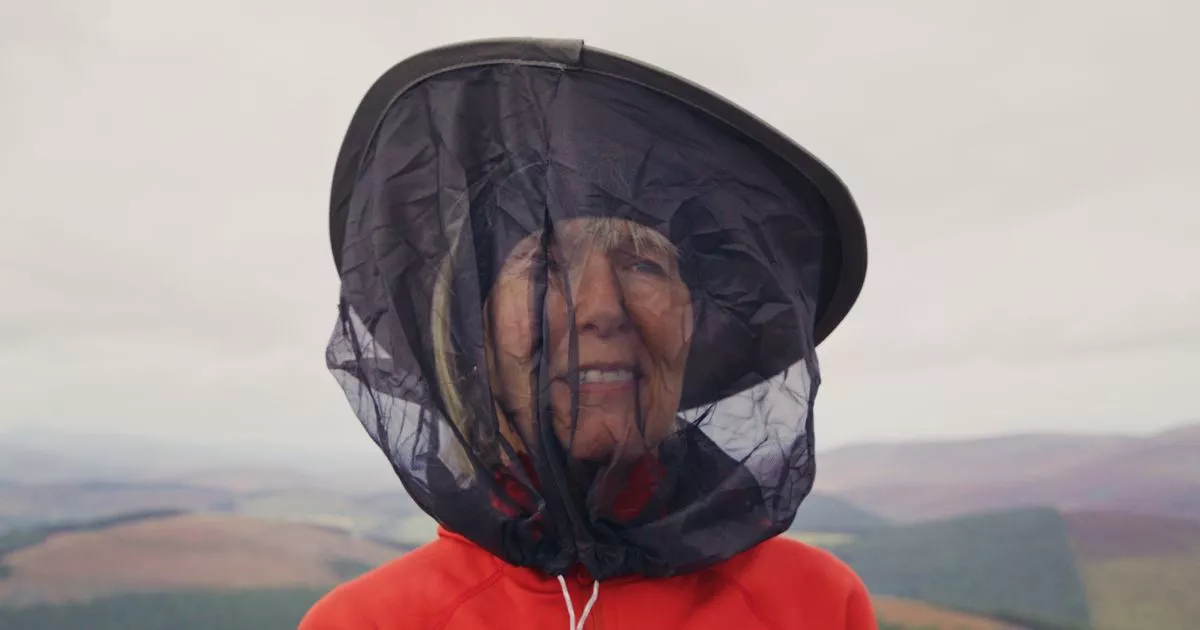From wearing bright clothes to avoiding still water, here’s how you can dodge the pesky creatures.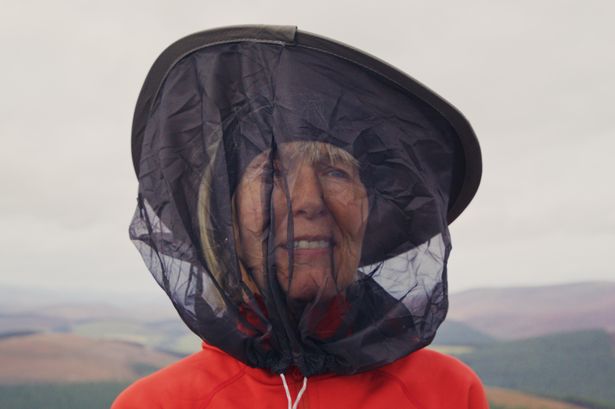 Wearing a head net is a good way to avoid midges(Image: Peter Burnett / Getty Images)
Wearing a head net is a good way to avoid midges(Image: Peter Burnett / Getty Images)
There are many things to love about summer in Scotland, from the music festivals to the evenings spent in beer gardens under the late night sun. However, one thing about the season that is decidedly less popular is the midges.
Midges are tiny flying insects found in Scotland that are infamous for their itchy bites. They are most common between May and October, with the peak season being the height of summer.
But you shouldn’t let midges put you off a hike or a camping trip this summer and there are many things you can and should do to minimise your risk of getting bitten.
The Daily Record has put together a list of tips to keep midges at bay over the coming weeks. From wearing bright clothes to avoiding still water, these should hopefully help you make most of the Scottish summer.
Read on for 10 tips to avoid midges in Scotland this summer.
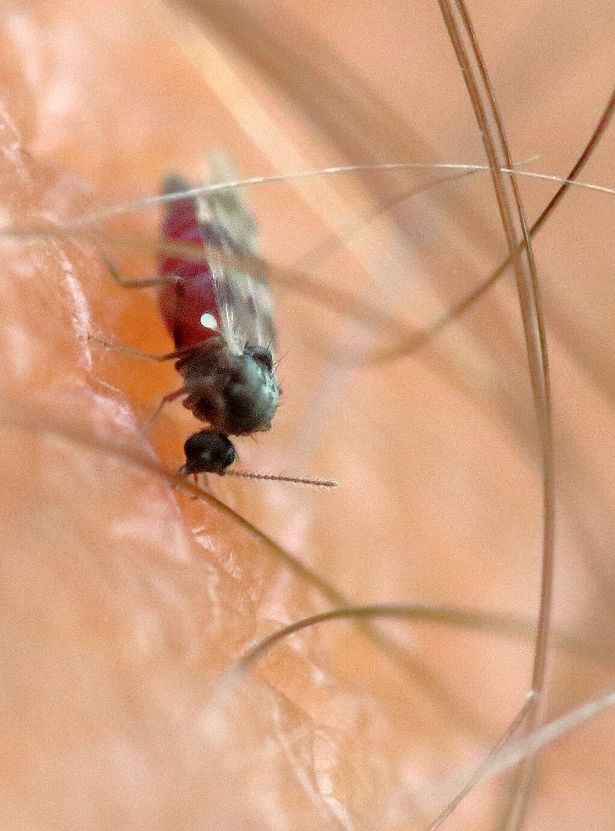 Midges are known for their itchy bites(Image: Dunpharlain, CC BY-SA 4.0 , via Wikimedia Commons)1. Take advantage of windy and dry weather
Midges are known for their itchy bites(Image: Dunpharlain, CC BY-SA 4.0 , via Wikimedia Commons)1. Take advantage of windy and dry weather
Midges are not fond of dry or windy weather, and you can use this to your advantage. If you can, try and head out on a hike when conditions are sunny and at least a little bit blustery if you don’t want to get bitten.
2. Stay away at dawn and dusk
While there is unfortunately no time of day that you will be completely safe from midges, certain times are definitely worse than others.
The insects are particularly active around dusk and dawn, which means you might want to avoid early-morning hikes and leaving your tent around sunset if you’re camping.
3. Enjoy a barbecue
If you are planning to enjoy some al fresco dining this summer, there is nothing that can ruin the atmosphere like being swarmed with midges. That is why a barbecue is a good choice, since the smoke will hopefully help keep them at bay.
4. Put on bright clothes
In general, midges are more drawn to dark colours and dislike light ones. Therefore, putting on some bright and colourful clothes can help avoid bites when out and about.
5. Utilise the the Midge Forecast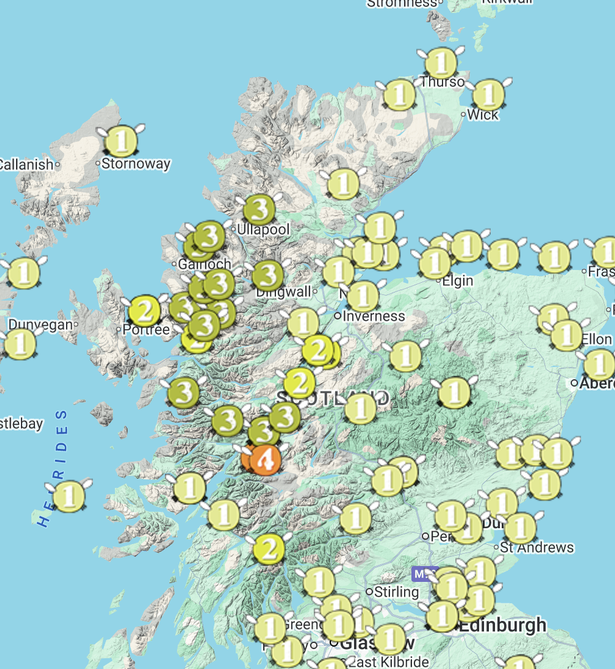 The Scottish Midge Forecast from Smidge shows where in Scotland midges are currently the worst(Image: Smidge)
The Scottish Midge Forecast from Smidge shows where in Scotland midges are currently the worst(Image: Smidge)
As reported by the Daily Record, repellent company Smidge has put together a Scottish Midge Forecast. This regularly updated interactive map shows where in Scotland midges are the worst at a given time—which will help you choose a hiking spot with less of the blood suckers.
6. Put on repellent
Unsurprisingly, putting on midge repellent is probably the most effective method of keeping midges at bay. There are a number of different brands available, so you might have to experiment and find out which one is the best for you.
7. Keep moving
When out hiking, you will no doubt want to stop and admire the scenery—but unfortunately this is not a good idea if you want to avoid bites. Midges can’t fly fast, and so if you are constantly moving they won’t be able to keep up.
READ MORE: The Scottish ‘subtropical’ garden that was crowned Family Venue of the Year8. Use a head net
If you really want to ensure you aren’t bothered by midges when out hiking or camping, you might want to invest in a head net. These protect the head, face, and neck from various flying insects—though you will still need to think about your arms and legs.
9. Avoid still water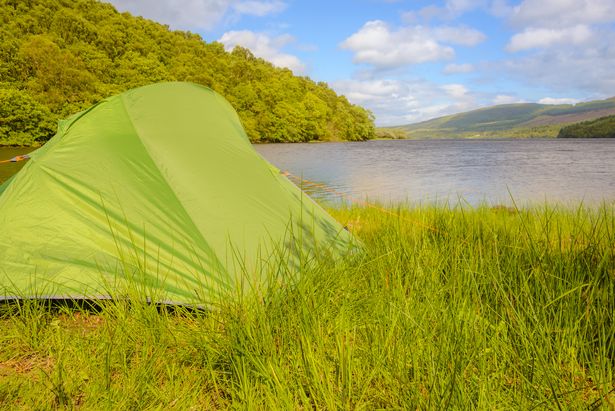 Camping near still water is a bad idea during peak midge season(Image: cdbrphotography / Getty Images)
Camping near still water is a bad idea during peak midge season(Image: cdbrphotography / Getty Images)
Midges love water and marshy conditions, since this is where they tend to breed. That means hanging around lochs and ponds is a big no-no if you are looking to keep your distance from the blood suckers.
10. Keep to the coastline
Finally, Scots wanting to minimise their chances of midge bites may want to simply stay away from the west of the Highlands where they are most common. You won’t avoid them completely by the seaside, but they won’t be quite as bad.
